Thinking about a fleet in terms of its drivers rather than the number of vehicles it operates is helping Altrad Services run one of the safest operations in the country. The winner of the 2020 Fleet News Safe Fleet Award has seen sustained improvement in driver behaviour resulting in a reduction in incident rates, after shifting its approach to managing its fleet.
The five-strong fleet team, with Matt Hammond at the helm, operates a mixed fleet, consisting of 800 vans, 200 company cars, 95 heavy goods vehicles (HGVs) and 200 grey fleet cars.
Safety, argues head of fleet, plant and equipment Hammond, should be at forefront of every fleet manager’s mind. “It’s the most important thing that we do,” he says. “Yes, we’re there to help run a business; yes, we’re there to help control costs, but none of us wants one of our vehicles involved in an incident and, more importantly, none of us wants to see any of our drivers in an incident either.”
At times, it’s easy to get lost in the numbers and forget about what really matters – the people.
“You can say you’ve got a fleet of 1,200 or 1,300 vehicles, but it doesn’t mean anything until you put it in the context of that’s 1,200 or 1,300 people, who you are providing transport for to and from work, and during their working day,” Hammond says. “When you personalise a fleet, you want to make sure that every single one of those drivers is given the safest vehicle and the safest procedures and processes to make sure they go home every night.”
Personalising the fleet
Equating the fleet to people rather than pieces of metal also aids buy-in from the wider business and the senior management team, according to Hammond. “You can get too sucked into the cost of damage or the cost of repairing vehicles and don’t think about how the driver was affected,” he says.
Instead, Hammond argues it’s important to ask was there something that the fleet team could have done to prevent an incident, including training the employee to perform the driving role they are being asked to do.
“None of our drivers are (employed as) drivers; they’re scaffolders, they’re painters, they’re laggers,” he says. “But, ultimately, when they get in the vehicle, they are drivers and we have to treat them like drivers.”
Hammond believes that many businesses fail to recognise this, but by personalising the fleet it becomes more tangible to the board and encourages buy-in when trying to effect change.
It also helps that there are cost benefits to be gained from a focus on safety. “We are a commercial organisation at the end of the day,” he says. “We’re here to make a profit and every incident we have is a cost to the business.”
Altrad has stolen a leaf out of Nestlé’s book on risk management, quantifying the cost to the business in terms of the services it sells.
In 2004, Nestlé calculated that, in Europe alone, it needed to sell 235 million KitKats to generate the revenue to finance its motor fleet collision risks.
“We will use how many metres of pipe do we need to lag or how much scaffold do we need to install to cover that cost,” says Hammond.
“You always have to lead with the financial (argument), because that’s what the board and PLCs want to see.
“How you take it from a cost on a spreadsheet to formulating a process to reduce those incident numbers and delivering that, is where the personalisation point comes into it.
“It’s not a case of beating people with a big stick, it’s about education and continuous training and development.”
Telematics has been fundamental to enabling Altrad to improve fleet safety.
Altrad uses Trakm8 to analyse driver behaviour, the black box technology to record and communicate all instances of high-risk driving, including over-revving, heavy acceleration, sharp cornering, harsh braking and speeding.
Used mainly within the van fleet, the software collates these into percentage scores, with 100% representing zero infringements.
It also uses a traffic light system of green for good driving, amber indicating room for improvement, and red for driving which increases road risk.
Altrad says that data is analysed by journey, including snail trail maps showing precisely where incidents occurred, enabling the fleet team to spot patterns of behaviour.
Incident rates plummet
It has reaped big rewards. Driver behaviour, measured from 0-100% using Trakm8’s traffic light system, went from 62% in 2016 to 93% in 2019. It now stands at 97%.
Incident rates also plummeted, down from an annual rate of 32% in 2016 to 12.5% in 2019, while spending on fines and vehicle repairs fell by 40%.
“The target now is to get that incident rate down to single figures,” says Hammond. “We’re at 11% at the moment.”
Hammond explains it was vital to understand what they were trying to accomplish before installing a telematics system.
He wanted to understand the “root causes” of the incidents Altrad vehicles were involved in and how they could prevent them happening in the first place.
“We looked at what we wanted it to deliver to fit in with our narrative and then we went out to look at the companies we could work with,” he says.
“Telematics is a wonderful tool, but people think it’s a magic wand sometimes. You have to understand what you want to achieve from that telematics system before you even enter into negotiations.”
Having used the technology to successfully target specific areas of its fleet over the past few years, Altrad is now investigating what it wants to focus on next.
“We’re at a point now where we’re reviewing our approach, but it doesn’t mean we’re going to change the system,” says Hammond. “We’re just going to look at what we want to do next and then use the technology to deliver it.”
Operating a much safer fleet, Altrad’s in-journey incidents are now at an all-time low, with the majority of claims down to prangs while manoeuvring vehicles.
Hammond acknowledges that tackling these incidents may require different tools and technologies, with in-cab cameras being considered, for example.
“We’ve also just ordered 250 new vehicles and they’ve all got parking sensors and reversing cameras,” he says.
However, alongside an unrelenting focus on both driver and vehicle, Hammond uses data to understand what else the fleet team can influence, to drive down incident rates.
“We’ll look at some of the sites where we’re having repeat incidents to see if we can improve parking or lighting,” he explains.
“Technology won’t necessarily help us tackle these outside influences, but it allows us to see where they could be an issue.”
Driver wellbeing
Hammond, speaking at last year’s Fleet News Virtual Fleet & Mobility Live, also highlighted how more emphasis on the mental health and wellbeing of drivers can be key to managing risk.
Although telematics data plays a big role in driver safety, focusing on the driver before they get in the vehicle is also vital, he says.
“What are the demands fleet managers are putting on the driver; have they looked at the driver’s wellbeing? Are there any external influences that need to be considered? Have they got a new baby at home or a sick relative that’s going to affect how they might sleep or how home life is?,” he asks.
“All of these things, which add to the overall risk of that driver and of that journey, need to be considered, rather than just looking at who’s driving fast, harsh braking and acceleration. It makes you look at the bigger picture of fleet management.”
Data from Office for National Statistics (ONS) recently revealed that the suicide rate for van drivers is 25% higher than the national average and 20% higher for truck drivers.
Van and truck drivers of all ages are a key demographic likely to suffer with poor mental health due to unpredictable journey times, traffic congestion, tight deadlines, a high workload and lack of social interaction.
“You’ve got to be realistic about the expectations you’re putting on a driver,” says Hammond.
Altrad provides employees with a number to speak to somebody in confidence about any issues, while they are also encouraged to talk openly about any work-related concerns they may have.
“Take our commercial drivers, for example,” explains Hammond. “If they feel there is a reason they can’t do what is being asked of them, they have the right to say ‘no’.
“We’re trying to deliver the safest fleet we can, but I can only do so much from sitting behind a desk, I’m not the person sat behind the wheel.”
Every driver has Hammond’s mobile number in their vehicle, giving them the option to speak to him directly, rather than a line manager, if they prefer.
“I get texts from drivers on a weekly basis and some of them may be raising an issue about a van, for example, but it’s how it should be,” he says.
“You want to be approachable, because at the end of the day they’re not part of the problem, they’re part of the solution.”
Learning curve
Not every intervention has delivered success, however, admits Hammond. “When we started, we approached it with too much of a big stick,” he says. “We, effectively, became the ‘fleet police’.
“It didn’t work at all; we didn’t engage with drivers. We initially engaged with their line managers, with the view we will come down heavy on you and you should come down heavy on the driver.
“All that did was get everybody’s back up and made us very unpopular. That was probably the biggest mistake we made, thinking that everybody had the same passion as we did.
“We live and breathe this everyday and you forget that everybody else in the business has got their own jobs to do. You don’t want to annoy them; you want to work with them.”
Hammond on...
Flexible rental cull could save £250,000 per year
Better fleet utilisation, rather than turning to flexible rental to plug a gap in operations, could save Altrad up to a quarter of million pounds a year.
Altrad’s company cars are leased, while its van fleet is financed via a mixture of outright purchase, contract hire and flexible hire.
“We are trying to move away from flexi-rent,” says Hammond. “We used to have quite a fluctuating fleet, which could go from 600 vans to 900 and then back down to 700 in the space of three or four months.”
A provider of industrial services to the oil and gas, energy and petrochemical sectors, the demands on Altrad’s fleet are determined by the differing contracts it serves.
However, Hammond says: “We’ve changed how we look at our fleet now; we try to keep the same vans on fleet and, if we need to move them around across contracts, we’ll move the vehicles rather than off-hiring and re-hiring.
“It’s meant we’ve been able to take that curve out of the fleet and, because our numbers are a lot steadier now, we’re looking to move a lot of the flexi-rent to more fixed-term lease rents.
“If we do that, we can save a quarter of a million pounds a year on our rental costs. It’s big money and it’s well worth doing.”
Pressure on fleets ahead of ICE ban
Hammond believes too much pressure is being put on fleets to make the switch to electric vehicles (EVs) ahead of a ban on the sale of internal combustion engine (ICE) cars and vans.
The sale of new diesel and petrol cars and vans will be banned from 2030 and Hammond says the biggest challenge for fleets is some people think that switch can happen now.
“I just think we need a bit of a reality check,” he explains. “We’ve got 10 years to make this happen. It’s going to happen and where it can happen now that’s great, but it can’t happen across an entire fleet overnight.”
He argues that the choice and range of vehicles is simply not quite there yet for electric powertrains to take the strain.
“There also isn’t the (charging) infrastructure in place yet to make it viable in all areas, but it will be, and it will come,” he says.
In terms of timing, Hammond expects the market will be in a better position at the end of his next four-year cycle to start making the switch.
“We’ll be closer to a solution that will have the range and we’ll be able to move a lot more vehicles across to electric,” he says. “It will be a slow start, but it will gather pace as we get closer and closer to that date.”

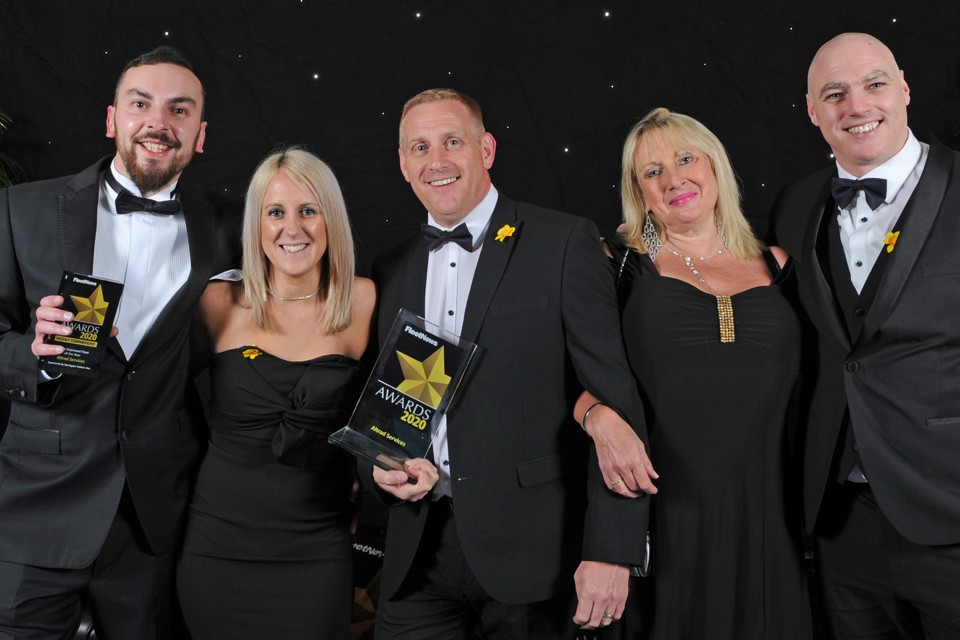




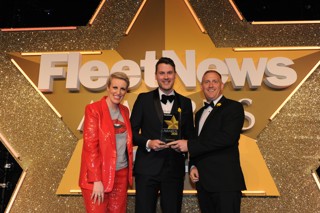

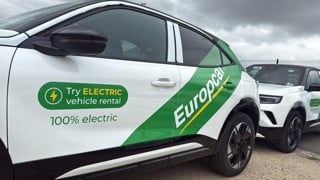
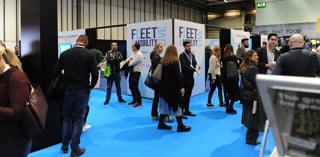







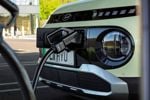





Login to comment
Comments
No comments have been made yet.